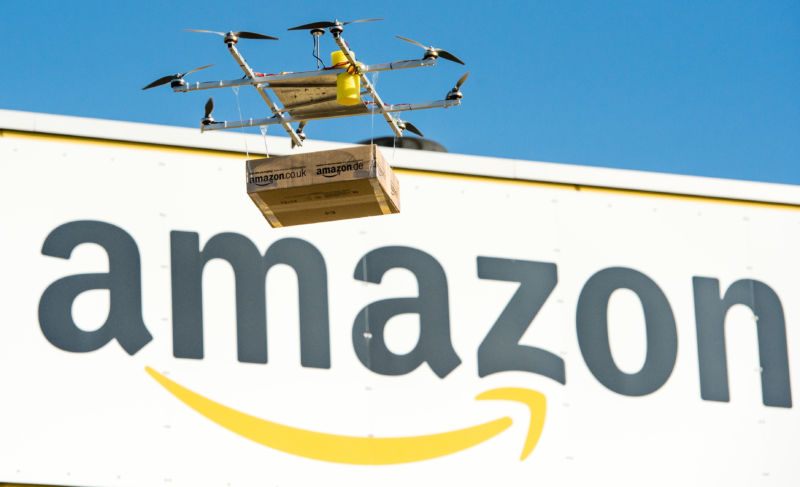

reader comments
116 with 80 posters participating
Amazon is by far the biggest US online retailer. In the past 20 years it has leapt past its origins as a website you could order books from to become, among other things, the everything store—one-stop shopping for all physical and digital goods from A to Z.
The company’s explosive growth is due in part to its sprawling third-party merchant marketplace. Many marketplace merchants are indeed above-board retailers, manufacturers, and resellers. But thousands more sell not only counterfeit items, but also mislabeled, unsafe, recalled, or even banned items that can put consumers—especially children—in serious danger.
The Wall Street Journal identified more than 4,100 such products for sale on Amazon.com during the course of a months-long investigation, and at least 2,000 are toys or medications that fail to include warnings about risks to children.
Among the Journal’s findings: 116 products falsely listed as FDA-approved, including toys, which the agency does not regulate; 80 listings for infant “sleeping wedges” the FDA says can cause suffocation and that Amazon had previously banned; 1,412 electronics listings falsely claiming to be UL-certified; 2,324 toys that failed to include federally mandated choking hazard warnings; and more.
The WSJ commissioned tests of 10 specific children’s products it bought on Amazon, many carrying the enigmatic “Amazon’s Choice” badge. Of those, four failed tests based on federal safety standards, including one that contained excessively high levels of lead.
Balloons also proved to be a sticking point: the WSJ found 4,500 balloon listings that did not include required choking hazard warnings, and the paper notified Amazon about them. Weeks later, WSJ found another 2,200 balloon listings that did not include required warnings. Including all the balloon listings, the WSJ identified 10,870 problematic listings to Amazon, of which 83% were eventually removed or altered.
One mislabeled product the WSJ included in its report proved deadly to its owner. A 23-year-old man in Missouri purchased a motorcycle helmet from Amazon that was at the time listed as certified as meeting US Department of Transportation safety standards. Later that year, however, he was killed in a crash while riding. A federal investigation later found that the helmet did not meet DOT standards and was recalled. The WSJ, however, found the product still for sale, with an active listing promising compliance, until the WSJ contacted Amazon to inquire about it.
Whack-a-Mole
The WSJ’s investigation found 157 products for sale that Amazon has already banned from sale on its site. The motorcycle helmet was one of more than 2,300 product listings altered or pulled after the WSJ drew them to Amazon’s attention. Yet, within two weeks, the WSJ found that at least 130 of these problem items reappeared, “some sold by the same vendors previously identified by the Journal under different listings.”
In short, the Journal writes, Amazon “has increasingly evolved like a flea market,” exercising little to no oversight over items sold by third-party merchants unless a specific complaint or media report draws an item to the company’s attention. The marketplace setup that causes Amazon to land in hot water seemingly annually for selling some kind of pro-rape, pro-slavery, or pro-Nazi apparel also leads to endemic listings for recalled or harmful goods.
About 60% of Amazon’s physical retail sales come from the third-party marketplace, the company has said. A recent quarterly report showed the marketplace generates $11.14 billion in sales for the ecommerce behemoth in just three months. But even consumers wary of shopping from third-party merchants can still easily find themselves purchasing from one. Many of the items in the WSJ’s investigation were fulfilled by Amazon: eligible for Prime shipping, from Amazon warehouses, and in Amazon boxes. Two different shoppers told the WSJ they had assumed harmful or mislabeled products they bought from the site were reviewed and approved in some way by Amazon, as they would be in a big-box store such as Target or Walmart, until contacted by the WSJ.
Counterfeit products, which are often less safe than their “real deal” counterparts, are also a persistent plague to Amazon and its customers. The WSJ did not test counterfeit goods, which show up in searches for every kind of product, from luxury goods to cheap USB cables.
When reached by Ars for comment, an Amazon representative directed us to a company blog post that says, in part, “We provide a number of ways for regulatory agencies, industry organizations, brands, customers, and our customer service teams to report safety issues. When we receive these reports, we move quickly to protect customers, remove unsafe products from our store, and investigate.”
Limited recourse
Swimming against the tide of dodgy listings and questionable goods is challenging for even the best-educated consumer, and prevailing in court if you do end up with a damaging product is, at best, a hit-or-miss exercise.
The family of the young man who died in the motorcycle crash sued Amazon, as well as the driver of the vehicle with which he had collided and the third-party merchant that sold the helmet. The merchant was ordered to pay $1.9 million in restitution; Amazon settled for $5,000 without admitting wrongdoing. A company attorney told the WSJ, “Basically, a third party was using Amazon as a bulletin board to advertise the product and sell.”
Your ability to sue Amazon if you are injured by a third party’s product largely depends on where you live. A federal appeals court in Philadelphia ruled in July that Amazon could be held liable under state law for a defective product that blinded a Pennsylvania woman.
The Third Circuit court, however, was the first to do so. The Fourth and Sixth Circuit Courts of Appeals ruled in May and June respectively that Amazon is merely a platform, not a “seller,” when it comes to state consumer protection law.


